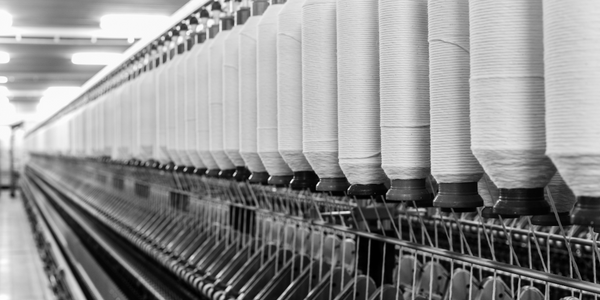Customer Company Size
Large Corporate
Region
- America
Country
- United States
Product
- Blue Yonder’s merchandise financial planning
- Blue Yonder’s forecasting
- Blue Yonder’s replenishment capabilities
Tech Stack
- Inventory Management Software
- Sales Forecasting Software
Implementation Scale
- Enterprise-wide Deployment
Impact Metrics
- Customer Satisfaction
- Productivity Improvements
Technology Category
- Functional Applications - Inventory Management Systems
- Functional Applications - Product Data Management Systems
Applicable Industries
- Retail
- Apparel
Applicable Functions
- Warehouse & Inventory Management
- Sales & Marketing
Use Cases
- Inventory Management
- Demand Planning & Forecasting
Services
- System Integration
- Software Design & Engineering Services
About The Customer
L.L.Bean is an American apparel and outdoor retailer founded by Leon Leonwood Bean. The company is known for its customer service and timely delivery of products. It employs approximately 5,000 people year-round, a number that increases to about 10,000 during its peak sales season. As the business has expanded, it has faced challenges in accurately predicting market trends and investing in the right products for the upcoming year. The company's commitment to customer service makes the speed of delivery a crucial aspect of its business model.
The Challenge
L.L.Bean, an American apparel and outdoor retailer, has been facing challenges as its business expands. The company, which employs around 5,000 people year-round and up to 10,000 during peak sales season, has been struggling to accurately predict market trends and invest in the right products for the upcoming year. Speed of delivery is a crucial aspect of L.L.Bean's business model, as the company prides itself on its customer service. Therefore, ensuring that products reach customers in a timely manner is of utmost importance.
The Solution
To address these challenges, L.L.Bean implemented Blue Yonder’s merchandise financial planning, forecasting, and replenishment capabilities. These tools allow the company to more accurately predict sales, purchase products from vendors, and allocate those products to the appropriate stores. In addition to leveraging these capabilities, L.L.Bean is actively exploring other solutions to maximize the value of the integrated Blue Yonder ecosystem. The success of this implementation goes beyond the technology itself. During the design phase, Blue Yonder consultants worked closely with L.L.Bean to consider future objectives and goals and how their next implementation can fit in with the solution that is currently being designed.
Operational Impact
Quantitative Benefit

Case Study missing?
Start adding your own!
Register with your work email and create a new case study profile for your business.
Related Case Studies.

Case Study
Fire Alarm System and Remote Monitoring Sytem
Fire alarm systems are essential in providing an early warning in the event of fire. They help to save lives and protect property whilst also fulfilling the needs of insurance companies and government departments.Fire alarm systems typically consist of several inter-linked components, such as smoke detectors, heat detector, carbon monoxide, manual call points, sounders, alarm and buzzer. The fire alarm system should give immediate information in order to prevent the fire spread and protect live and property.To get maximum protection a shoe manufacturer in Indonesia opted for a new fire alarm system to monitor 13 production sites spread over 160 hectars. Although the company had an existing fire alarm system, it could not be monitored remotely.It was essential that the new system would be able to be monitored from a central control room. It needed to be able to connect to the existing smoke detector and manual call point. Information should be easily collected and passed on to the Supervisory Control and Data Acquisition (SCADA) system. Furthermore, the system should have several features such as alarm management, auto reporting, being connected to many client computers without additional cost, and run 24/7 without fails. The company also needed a system which could be implemented without changing the architecture of the existing fire alarm system.

Case Study
IoT Applications and Upgrades in Textile Plant
At any given time, the textile company’s manufacturing facility has up to 2,000 textile carts in use. These carts are pushed from room to room, carrying materials or semi-finished products. Previously, a paper with a hand-written description was attached to each cart. This traditional method of processing made product tracking extremely difficult. Additionally, making sure that every cart of materials or semi-finished products went to its correct processing work station was also a problem. Therefore, the company desired an intelligent solution for tracking assets at their factories. They also wanted a solution that would help them collect process data so they could improve their manufacturing efficiency.

Case Study
Improving Production Line Efficiency with Ethernet Micro RTU Controller
Moxa was asked to provide a connectivity solution for one of the world's leading cosmetics companies. This multinational corporation, with retail presence in 130 countries, 23 global braches, and over 66,000 employees, sought to improve the efficiency of their production process by migrating from manual monitoring to an automatic productivity monitoring system. The production line was being monitored by ABB Real-TPI, a factory information system that offers data collection and analysis to improve plant efficiency. Due to software limitations, the customer needed an OPC server and a corresponding I/O solution to collect data from additional sensor devices for the Real-TPI system. The goal is to enable the factory information system to more thoroughly collect data from every corner of the production line. This will improve its ability to measure Overall Equipment Effectiveness (OEE) and translate into increased production efficiencies. System Requirements • Instant status updates while still consuming minimal bandwidth to relieve strain on limited factory networks • Interoperable with ABB Real-TPI • Small form factor appropriate for deployment where space is scarce • Remote software management and configuration to simplify operations

Case Study
Digital Retail Security Solutions
Sennco wanted to help its retail customers increase sales and profits by developing an innovative alarm system as opposed to conventional connected alarms that are permanently tethered to display products. These traditional security systems were cumbersome and intrusive to the customer shopping experience. Additionally, they provided no useful data or analytics.

Case Study
How Sirqul’s IoT Platform is Crafting Carrefour’s New In-Store Experiences
Carrefour Taiwan’s goal is to be completely digital by end of 2018. Out-dated manual methods for analysis and assumptions limited Carrefour’s ability to change the customer experience and were void of real-time decision-making capabilities. Rather than relying solely on sales data, assumptions, and disparate systems, Carrefour Taiwan’s CEO led an initiative to find a connected IoT solution that could give the team the ability to make real-time changes and more informed decisions. Prior to implementing, Carrefour struggled to address their conversion rates and did not have the proper insights into the customer decision-making process nor how to make an immediate impact without losing customer confidence.








